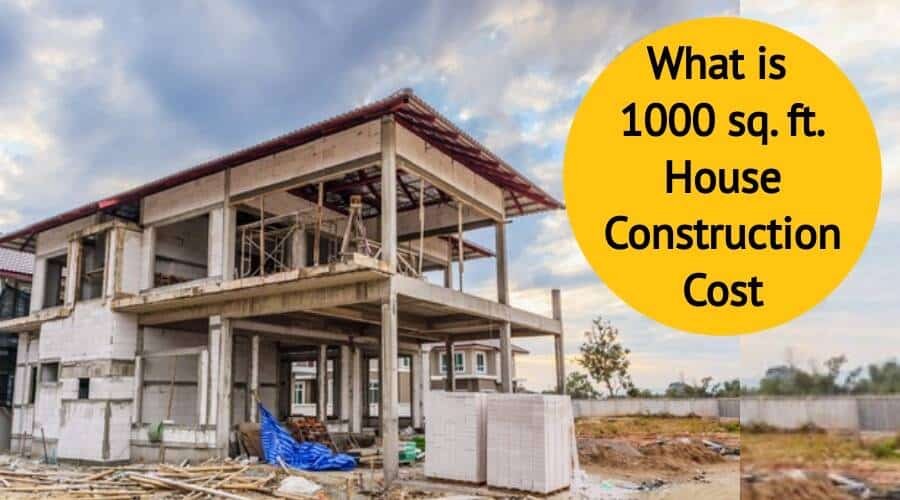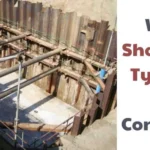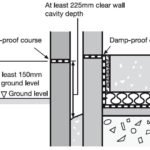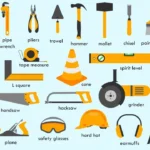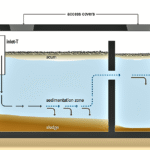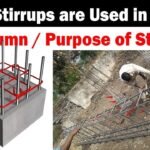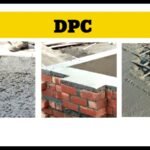Building a 1000 sq ft house in India can cost anywhere from a few lakhs to several tens of lakhs of rupees. The total depends on many factors. Planning a budget carefully is essential. In this guide, we explain the main cost drivers and give detailed examples. We focus on simple, clear English and break down costs by category. All figures are in Indian Rupees (₹) and reflect 2024–25 rates.
Factors Influencing Construction Cost
Several key factors affect how much you will pay to build your home:
- Location (City vs Rural): Urban areas usually have higher land and labour costs. Transporting materials to remote areas can also add to costs
- Design and Size: A complex or custom design (with curves, lofts, or many pillars) needs more materials and skilled work. Simpler, compact designs save money (SRC- housegyan).
- Material Quality: Using premium materials (like marble flooring, designer tiles, or high-end fixtures) raises costs. Basic or locally available materials keep budgets lower.
- Labour and Contractor Fees: Wages for builders and masons vary by region. Skilled labour in big cities is pricier. Efficient contractors can also reduce waste and delays.
- Government Fees and Regulations: Permits, taxes (GST on materials), and building approvals add indirect costs. For example, approvals and utility connections alone can cost ₹50,000–₹2,00,000 housegyan.com.
- Economic Factors: Inflation and commodity prices (steel, cement) have been rising. Global supply issues or tax changes can influence material prices. For instance, cement and steel prices fluctuate with demand magicbricks.com.
These factors combine to set the cost per square foot and the final budget. For example, City A may have ₹2,000 per sq.ft. rates, while rural areas might be ₹1,500 per sq.ft. for the same design. Always get updated local quotes.
Cost per Square Foot and Total Estimates
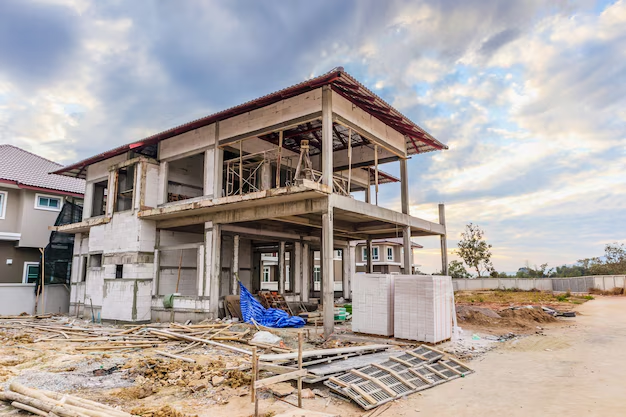
Construction cost in India is usually discussed per square foot (sq.ft). Current estimates (2025) give broad ranges:
- Standard quality: ≈ ₹1,200 – ₹2,000 per sq.ft
- Mid-level quality: ≈ ₹2,000 – ₹2,800 per sq.ft
- Premium quality: ≥ ₹2,800 – ₹3,500+ per sq.ft
For a 1000 sq.ft home, multiply these rates by area. Brick&Bolt (January 2025) reports that a basic 1,000 sq.ft house can cost about ₹18–20 lakh in total (₹1,800–2,000/sq.ft). A mid-range fit-out runs around ₹20–28 lakh (₹2,000–2,800/sq.ft), and a high-end home can be ₹28–35 lakh or more (₹2,800+/sq.ft)bricknbol. These are rough estimates; prices vary by city and design.
According to one real-estate guide, average costs per sq.ft range ₹1,500–3,000 depending on location and quality. HouseGyan (2024) gives a wide range ₹1,500–3,500 per sq.ft. In practice, a 1000 sq.ft house often ends up costing ₹20–30 lakh for a decent mid-quality build.
For clarity, the table below summarizes cost ranges (per Brick&Boltbricknbolt.com):
| Quality Level | Cost per sq.ft (₹) | Total Cost (1000 sq.ft) | Description |
|---|---|---|---|
| Affordable/Basic | 1,800 – 2,000 | 18 – 20 lakh | Basic materials & designbricknbolt.com |
| Mid-level | 2,000 – 2,800 | 20 – 28 lakh | Better materials & modest custom workbricknbolt.com |
| Premium/Luxury | 2,800 – 3,500+ | 28 – 35 lakh+ | High-end materials & finishesbricknbolt.com |
These numbers are estimates only. The final cost can be higher if you choose very expensive tiles, fittings, or elaborate architecture. Always add a safety margin (see “hidden costs” below).
Also Read Trimix (VDF) Flooring in India: Ultimate Guide to Vacuum Dewatered Floors, Costs, and Best Practices
Detailed Cost Components
A house’s total cost breaks into categories (materials, labour, etc.). As a rule of thumb (from Brick&Bolt’s breakdownbricknbolt.com), a 1000 sq.ft home’s budget might be apportioned roughly as follows:
| Component | % of Total Cost |
|---|---|
| Foundation & Structure | 25 – 30% |
| Walls & Plastering | 15 – 20% |
| Flooring & Tiling | 10 – 15% |
| Doors & Windows | 10 – 12% |
| Electrical Work | 5 – 7% |
| Plumbing & Sanitation | 8 – 10% |
| Finishing & Painting | 7 – 8% |
| Labour (overall) | 15 – 20% |
For example, strong foundation and structural elements often take up the largest share (around 25–30%bricknbolt.com). Finishes (paint, fixtures) are smaller but still important. Labour costs for all tasks combined often total ~15–20%bricknbolt.com.
Note: These are broad ranges. In high-end homes, finishing may cost more, shifting percentages.
Material and Labour Breakdown
Materials (cement, steel, bricks, etc.) are roughly 40–50% of cost, with labour making up a similar share. AECord (June 2025) notes materials ~40–50%, labour ~25–35% of totalaecord.com. HouseGyan suggests labour can be ~20–40%housegyan.com. (Some sources claim labour may even reach 60%magicbricks.com, but this varies by what is counted as labour.)
As of 2024, typical prices in India are:
| Material | Approx. Price |
|---|---|
| Cement (50 kg bag) | ₹350 – ₹500housegyan.com |
| TMT Steel (per tonne) | ₹50,000 – ₹75,000housegyan.com |
| Common Bricks (each) | ₹7 – ₹10housegyan.com |
| Vitrified Tiles (per sq.ft) | ₹30 – ₹150housegyan.com |
| Emulsion Paint (per litre) | ₹250 – ₹500housegyan.com |
(Sand, gravel, wood, plumbing pipes, etc. also add costs.) Raw material costs can rise over time, so stay updated on local prices.
Example: Cost Breakdown for a 1000 Sq.Ft House
To illustrate, consider a 1000 sq.ft (approx.) 3-BHK house. One breakdown (Kairali TMT, May 2024) itemized the bills as followskairalitmt.comkairalitmt.com:
- Materials: Cement (~400 bags) ₹1,68,000; Steel (3,000 kg) ₹2,40,000; Sand, aggregates, bricks, wood, etc., totaling ₹14,43,200kairalitmt.com.
- Labour: Skilled and unskilled labour at about ₹350-400 per sq.ft, totaling ~₹4,00,000kairalitmt.com.
- Extras: Permits, design fees, plumbing/electrical fittings, water tank, landscaping, etc., roughly ₹6,00,000–7,00,000kairalitmt.com.
These summed to a grand total of ~₹25,30,000 for the housekairalitmt.comkairalitmt.com.
Another example (MagicBricks blog) estimated for 1000 sq.ft: cement ~₹1.68L, steel ~₹2.40L, flooring ₹1.00L, electrical+plumbing ₹2.20L, labour ₹2.00L, totaling only ~₹10.28Lmagicbricks.com. That figure seems low because it left out many finishes and extras. In practice, you should budget more for tiling, painting, joinery, fittings, and landscaping.
Additional and Hidden Costs
Beyond materials and labour, several extra charges can add 5–10% (or more) to your budget. Be sure to include:
- Approvals & Permits: Building plan approval, municipal fees, electrical/water connections. In India these can cost ₹50,000–2,00,000housegyan.com or higher.
- Professional Fees: Architect, structural engineer, and contractor fees (often ~5–10% of construction cost)kairalitmt.combricknbolt.com.
- Site Preparation: Clearing, excavation, or filling uneven land. Unexpected ground issues may require extra foundation work.
- Interior and Exterior Finishes: Cupboards, kitchen fittings, security grills, gates, boundary wall, and landscaping can be sizeable expenses.
- Utility Work: Water tank, septic or sewage tank, electricity meter, borewell or sump.
- Contingencies: Allow ~5–10% of the budget for overruns and surprisesaecord.com (price hikes, extra paint, or minor change orders).
As Brick&Bolt notes, hidden charges include government levies, architect/engineer fees, interior finishes, and cost overrunsbricknbolt.com. Always pad your budget.
Tips to Reduce Costs
You can often control costs without sacrificing quality by smart choices:
- Simple Design: Opt for a straightforward plan (rectangle shape, standard sizes). Complex curves or too many corners add labour and material wastehousegyan.com.
- Material Choices: Use good but standard materials. Locally available bricks, tiles, or pre-cast elements save on transport and custom chargeshousegyan.com. Explore alternative materials like fly-ash bricks or precast concrete for lower costaecord.com.
- Plan Thoroughly: Finalize your design before construction. Changing plans mid-way causes delays and wastehousegyan.com.
- Multiple Quotes: Get at least 2–3 contractor bids and negotiate bulk rates for materials. Use online cost calculators for benchmarks.
- Hire Experienced Labor: A skilled contractor can manage the project efficiently, reducing rework and idle timehousegyan.com.
- DIY Minor Jobs: You or family can do some finish work (painting, simple carpentry, gardening) to cut hiring costshousegyan.com.
- Energy Efficiency: Planning proper insulation, ventilation, or solar water heating may cost more initially but lower bills later.
- Timing: Some materials (like steel or timber) fluctuate seasonally. If possible, buy when prices dip.
These tips are echoed by experts. For instance, HouseGyan advises “simple, low-cost designs”, “standard materials”, and planning changes out “before construction starts”housegyan.com. AECORD similarly emphasizes multiple bids, value-engineering, and using cost-effective local materialsaecord.comaecord.com.
FAQs
Q1: How much does it typically cost to build a 1000 sq.ft house in India?
A1: Costs vary widely by region and quality. As of 2025, expect roughly ₹15–35 lakh for a 1000 sq.ft house. An average mid-range home is about ₹20–30 lakh.
Q2: What is the average construction cost per sq.ft in India?
A2: Current estimates range ₹1,500–3,000 per sq.ft for standard residential construction. High-end finishes can push this above ₹3,000.
Q3: How do I calculate total construction cost?
A3: Multiply area by expected rate per sq.ft. For example, at ₹2,000/sq.ft, a 1,000 sq.ft house costs ₹20 lakh. Then add allowances (contractor fees, permits, contingency). In formula form:
Total Cost = (Built-up Area × Cost per sq.ft) + Contingency + Other fees.
One formula source says: Cost = Area × Rate per sq.fthousegyan.com.
Q4: What factors affect per sq.ft cost?
A4: Key factors include location (city vs rural), material quality (basic vs premium), labour charges, design complexity, and permits/taxes. For example, a luxury marble floor costs more per sq.ft than a simple tile.
Q5: Are labour and material costs included in these estimates?
A5: Yes. Typical breakdown is ~40–50% materials and ~20–40% labour. Labor can be a large share: one estimate is about 20–40% of the budget. (Some reports even put labour higher, but this varies by scope.)
Q6: Do these costs include interiors and furnishings?
A6: No. Basic construction cost does not cover furniture, modular kitchen units, false ceilings, or appliances. These are extra. Basic cost covers the structure, walls, roof, flooring, plumbing, and electrics. All furniture, fixtures, cabinets, and decor must be added separately.
Q7: How can I reduce my house construction cost?
A7: Simple ways: opt for basic designs, use locally-sourced or standard materials, plan well, and do minor work yourself. Also, get multiple contractor quotes and compare. Prefabricated components (like pre-cut shutters) and local materials (e.g. fly-ash bricks) can save time and money.
Q8: How much contingency should I add?
A8: Industry advice is to set aside about 5–10% of the estimated budget as contingency. This covers unexpected expenses like price rises or design changes.
Conclusion
Building a 1000 sq.ft home in India today typically requires planning for ₹20–30 lakh (or more) for a decent mid-range project. Exact costs depend on where you build, what materials you use, and how you design the house. By understanding the cost breakdown, setting aside allowances, and following budget-saving tips, you can avoid unpleasant surprises.
Remember to get multiple estimates and update your plan as prices change. Including energy-efficient and durable materials may cost more upfront but save money long-term. In any case, thorough research, detailed budgeting, and a reliable contractor are key to bringing your 1000 sq.ft dream home in India to life without breaking the bank
